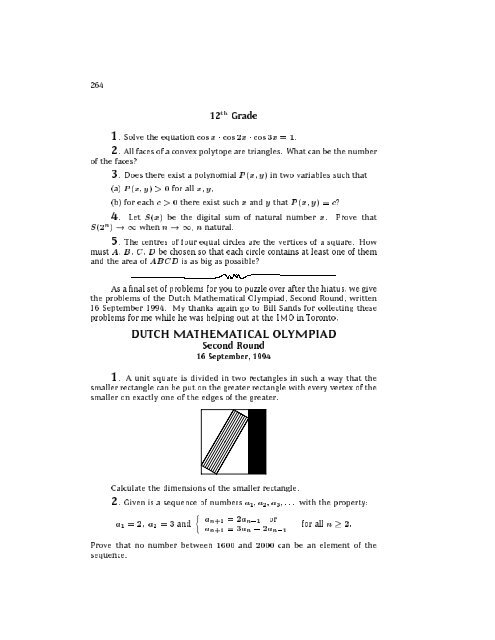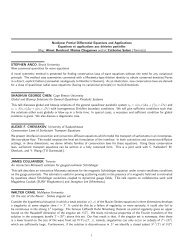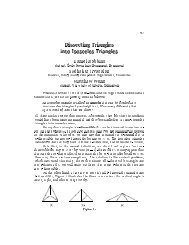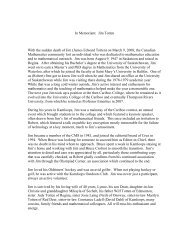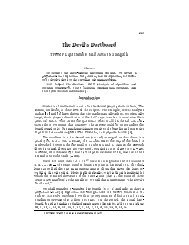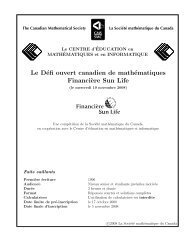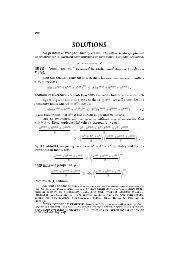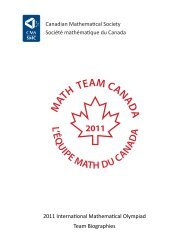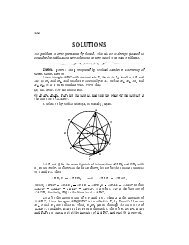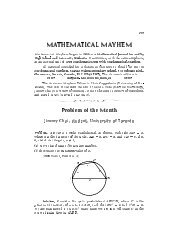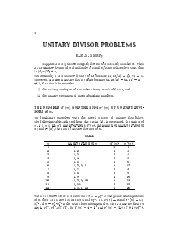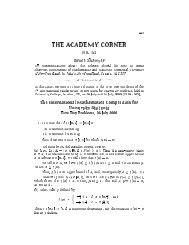Read full issue - Canadian Mathematical Society
Read full issue - Canadian Mathematical Society
Read full issue - Canadian Mathematical Society
Create successful ePaper yourself
Turn your PDF publications into a flip-book with our unique Google optimized e-Paper software.
264<br />
12 th Grade<br />
1. Solve the equation cos x cos 2x cos 3x =1.<br />
2. All faces of a convex polytope are triangles. What can be the number<br />
of the faces?<br />
3. Does there exist a polynomial P (x; y) in two variables such that<br />
(a) P (x; y) > 0 for all x; y,<br />
(b) for each c>0there exist such x and y that P (x; y) =c?<br />
4. Let S(x) be the digital sum of natural number x. Prove that<br />
S(2 n ) !1when n !1,nnatural.<br />
5. The centres of four equal circles are the vertices of a square. How<br />
must A, B, C, D be chosen so that each circle contains at least one of them<br />
and the area of ABCD is as big as possible?<br />
As a nal set of problems for you to puzzle over after the hiatus, we give<br />
the problems of the Dutch <strong>Mathematical</strong> Olympiad, Second Round, written<br />
16 September 1994. My thanks again go to Bill Sands for collecting these<br />
problems for me while he was helping out at the IMO in Toronto.<br />
DUTCH MATHEMATICAL OLYMPIAD<br />
Second Round<br />
16 September, 1994<br />
1. A unit square is divided in two rectangles in such a way that the<br />
smaller rectangle can be put on the greater rectangle with every vertex of the<br />
smaller on exactly one of the edges of the greater.<br />
Calculate the dimensions of the smaller rectangle.<br />
2. Given is a sequence of numbers a1; a2;a3;::: with the property:<br />
a1 =2; a2=3and<br />
an+1 =2an,1 or<br />
an+1 =3an,2an,1<br />
for all n 2:<br />
Prove that no number between 1600 and 2000 can be an element of the<br />
sequence.


